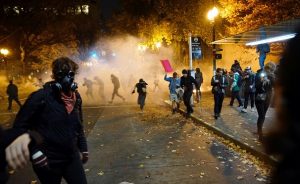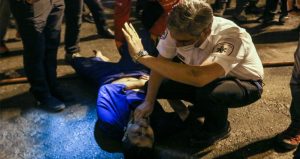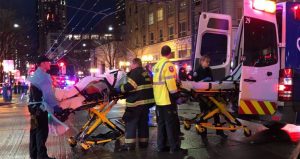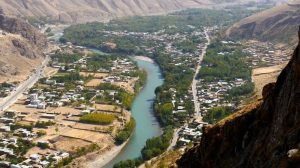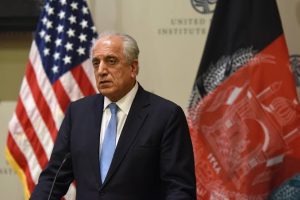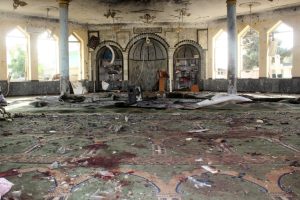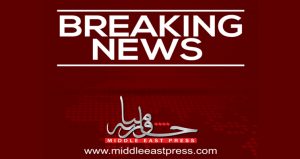600 Cities Around The World, Millions At The Heart Of Washington; Do Protesters Find Trump A New Gorbachev?
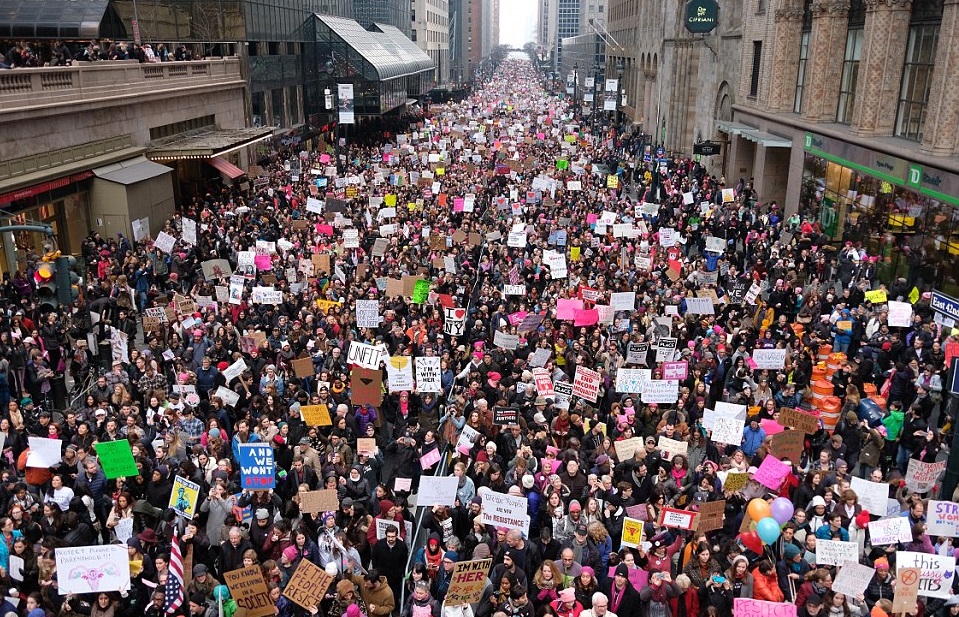
MEP: In an interview with the Associated Press (AP), the 85-year-old Gorbachev says that Mr. Trump “has little political experience, but maybe it’s good.”
The juxtaposition of Donald Trump and Mikhail Gorbachev in a headline may come as a surprise to many readers. What do a social-democrat who wanted to reform Communism and the billionaire right-wing populist magnate have in common? Indeed, if we focus on their ideologies and individual histories (to the extent that they matter) nothing—not “almost nothing”, but “nothing”! But if we look at them and their moment in history from a structural perspective, similarities are inescapable. For starters, neither man believed in the hierarchically structured international systems they preside(d) over. Both men are part of the ruling elite, but fought against it.
The vastness of Protests and the closeness of analogy
More than one million people marched through Washington, D.C., and other American cities Saturday to show support for women’s rights and express their discontent over the election of President Donald Trump.
The Women’s March drew members of Congress, world-famous actresses and countless citizens like Joanne Gascoyne of Albany, New York a 78-year-old retired teacher who traveled to New York City with her daughter and two granddaughters.
“I feel people are afraid to vote for a woman for president,” Gascoyne said. “I’m really here for women and to inspire my granddaughters to carry on.”
The biggest demonstration took place in Washington, where protesters filled Pennsylvania Avenue, the same street Trump walked down a day before during his inaugural parade. In the evening, the crowd moved toward the White House.
March organizers said protests took place in more than 600 cities across the world.
Attendance was not always easy to determine. For instance, Washington march organizers said about 500,000 people took part, but authorities did not confirm that number or provide their own estimate.
In Boston, 120,000 to 125,000 people protested, according to a police aerial photo analysis cited by a senior Boston Police official. Police said the crowd there was too big for the March route and could not proceed because “it would be like a snake eating its tail.”
In Los Angeles, more than 100,000 people marched, police said. So many people crammed into the streets that “our march turned into a stand,” said Ellen Crafts, who handled public relations for the event.
“Sister marches” happened outside the United States, too.
People gathered to demonstrate in most major cities around the world, including London; Tel Aviv; Melbourne, Australia; Pristina, Kosovo; Moscow; Berlin and Mexico City — often in front of US embassies.
There waseven a protest in Antarctica– about 30 eco-minded tourists and non-government scientists aboard a ship in international waters hoisted signs saying “Penguins for peace” and “Seals for science,” organizers said.
The march organizers believe more people came out Saturday for the protests than for Trump’s inaugural events on Friday.
Washington protest organizers, who originally sought a permit for a gathering of 200,000, said Saturday that as many as a half million people participated, dwarfing Friday’s inaugural crowd.
More than 470,000 people had taken the Metro, the Washington subway system, by 1 p.m., a weekend ridership record. The metro tweeted Saturday there were 275,000 trips taken Saturday by 11 a.m.
The protesters, which included many men, hit the streets for different reasons, among them health care, the future of the Affordable Care Act, the environment and income equality.
But Trump’s stated attitudes toward women and his comments about judging women by their weight and appearance kept coming up, as did his now infamous remarks about grabbing women by their genitalia.
The question being raised here is what the protests are for or against. Is Trump such a dangerous man for the world for whom millions of people feel the fear and protest?
A New Gorbachev on the Way
Gorbachev came to power in 1985 planning to reform Soviet Communism so that it could be economically more efficient and provide higher incomes for its people.
In the international realm, the countries of the “socialist camp” were organized in such a way that the USSR was their leader. The USSR, in turn, was led by the Communist party. And the Communist party was led by its Secretary General.
So, whatever the Secretary General decided to do, the USSR did, and whatever the USSR wanted to do had to be acquiesced in or imitated by the “allies,” or the satellite countries.
In the words of a Yugoslav ambassador to the USSR in the 1950s, when the “weather” changed in Moscow, if it became colder, “we would all put on winter coats.” And if it got warmer, as with Khrushchev’s “thaw,” “we would all wear short sleeved-shirts.”
Speechlessness among the USSR’s allies
When Gorbachev came to power and staked out positions that were entirely dissonant from whatever had come from the Kremlin before, the Soviet and East European Communist elites were totally taken aback and paralyzed.
Reforming the economic and political systems and letting the Warsaw Pact countries “do it their own way” (the Sinatra song evoked by Gorbachev) were not just deeply troubling ideas. They were also directly antithetical to the elites’ power and to the ideological legitimation of their rule.
At the same time, those elites could not imagine attacking the Secretary General’s position. After all, the Secretary General, not unlike the Pope, was supposed to be infallible.
Torn between an obvious undermining of their rule and inability to mount a defense, they helplessly waited for the outcome, doing nothing.
We know by now that the eventual outcome was the dissolution of the Soviet Union and the end of Communist regimes in Eastern Europe, as well as the end of Communism as a way to organize society.
The Western hierarchy
The Western capitalist world was organized in 1945 in a fashion that was structured in a remarkably similar hierarchical fashion. The countries in the Western camp were “equal,” but one was “more equal.”
In fact, were it not for the United States and the effort and money it expended in Europe and Japan, it is very unlikely that Europe and Japan would today look the way they do.
At the top of the “more equal” country sits its president. And while U.S. presidents have had their own idiosyncrasies (think Nixon or Carter), there were basic rules that they all observed. In particular, a close military and political union of culturally similar, U.S.-led democracies was never questioned.
The Western elites, including in the United States, might have liked one president more than another (the European infatuation with Obama was quite extraordinary), but they felt safe that the essential architecture of the international system, created by the United States, would be upheld by the United States.
Trump as a “reformer”
With Trump now questioning the modus operandi of NATO pretty much the same way that Gorbachev wondered about the need for the Warsaw Pact, that assurance is gone (or seems to be gone).
In Trump’s world, the EU is not sacrosanct either, nor is the WTO or the entire international architecture that the United States built from 1945 onwards.
The elite in the West, like the Communist elites in the East some 30 years ago, are now at a loss. Aping or accepting the rhetoric emanating from Washington goes against the body of rituals and beliefs they have created and defended over the past 70 years.
Yet, opposing Washington, like opposing the Secretary General, seems out of the question. After all, no similar system can be set up by a European power, nor by a combination of European powers.
As a result, the Western elites treat Trump as they would treat a tiger with whom they are unwillingly locked in a cage: They try to be friendly to the tiger hoping to avoid being eaten, but they hope that the tiger would soon be taken out of the cage.
Will Europe find its voice and respond?
Will Trump have a similarly devastating effect on democracies that Gorbachev had on Communism? I doubt it, because the Western democratic societies are more resilient and organic.
If they are not, to use Nassim Taleb’s terminology, “anti-fragile” (i.e., thriving in chaos), they are at least robust.
Communist societies, being hierarchical, were extremely brittle. Western societies have technocratic elites in power, but these elites are subject to recall and they do have democratic legitimation.
Further, capitalism unlike Communism is economically successful. There are very few people in France who would like to be ruled as China is ruled today. There were millions in Poland who craved to be ruled like France.
Trump a destroyer?
Trump will not, I think, destroy some essential structures of the Western system as it was built after the World War II.
However, with his rough, chaotic and unpredictable governing style, he might scare the ruling elites in the West, encourage “revisionists” and bring about changes that will alter the world as it was created in Yalta and Potsdam.
Many people regretted that the Clinton Administration failed to seize the moment at the end of the Cold War to create a more just international order that would be based on the rules of law, would not be dichotomic or even Manichean, one with its origin in the Cold War, and one that would include Russia rather than leave it out in the cold.
Trump is unlikely to create a new structure, but he can break parts of the old one. That would be quite ironic, for Trump has always carefully guarded his reputation as a (real estate) builder – not a demolition company.
In short, it doesn’t seem as if he has any new “Trump Tower” in mind for a different Western architecture. If that comes to pass, he might usher in a post-Cold War era, the contours of which no one can as of yet properly imagine. Trump would thus close the book on 1945.
Trump a builder?
Finally, if one wanted to be really imaginative and/or optimistic Trump may have one possible ace up his sleeve. The Clinton administration failed to create a more inclusive international order at the end of the Cold War, especially in relation to Russia.
Trump seems inclined to change at least that particular feature. To what extent a détente with Moscow — if it indeed happens, given Trump’s unpredictability — means a qualitative change in global politics remains to be seen.
